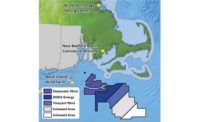Disaster Assessment
Maine Hardest Hit by Powerful East Coast Storm

A coastal storm Dec. 18 that brought flooding, downed power lines and damaged infrastructure in many Northeastern states, delivered its most powerful punch to Maine, causing significant infrastructure damage. The fierce storm that stretched from Florida to Maine blew into Atlantic Canada Dec. 19, leaving more than 400,000 in Maine without power.
In a Dec. 20 press conference, Maine Gov. Janet Mills (D) said, “As of this morning, MaineDOT has reopened more roads and bridges as flood waters have receded.” There were 68 state road closures on Dec. 20, down from nearly 100 the prior day “as a result of downed trees and power lines, flooding, and significant infrastructure damage,” Mills said. While all Maine counties have been affected by the storm, more than half of the road closures are in Oxford, Franklin and Kennebec counties.
Currently, 28 bridges were closed due to damage to roads leading to the bridges, but none have collapsed from flood waters, Mills said, adding, "As flood waters recede, MaineDOT will continue to clear roadways of debris, assess damage and begin repair efforts."
While it's too early to release damage assessments in Maine, Vanessa Corson, spokeswoman for the Maine Emergency Management Agency, says its recovery team is set to receive public infrastructure damage numbers from the county's EMA on Dec. 27. It will take several days to aggregate the numbers.
"We have not lost any state bridges," says Paul Merrill, a Maine Dept. of Transportation spokesman. MaineDOT is also working on an estimate for cost of repairs, expected soon.
At least five people died in the storm in Pennsylvania, South Carolina, New York, Maine and Massachusetts, the AP reported. The National Weather Service reported that by mid-morning Dec. 18 more than 5 in. of rain had fallen in some areas of New Jersey and northeastern Pennsylvania. A few other states received more than 4 in. of rain. Newry, Maine, near the New Hampshire border, received more than 7 in. of rain.
On Dec. 19, Mills declared a State of Civil Emergency for 14 Maine counties. This allows for the state to mobilize all state resources "to assist and support response and recovery efforts and positions the state to seek federal disaster support in the coming weeks,” according to Mills' statement.
While 14 counties were chosen for targeted assistance in the hardest hit areas, the state is ready to assist all counties in need, Mills said.
Among the 28 bridges closed is the Frank J. Wood Bridge, which carries Maine Rt. 101 over the Androscoggin River between Brunswick and Topsham. MaineDOT hired Reed & Reed for the $49.9-million bridge replacement project, scheduled for completion in late 2026, according to the MaineDOT website.
As of Dec. 19 in Vermont, the Winooski River was cresting at 21.46 ft, more than 3.5 ft above flood stage, but still 1.8 ft lower than the record flooding in July. In Burlington, Vt., following a July 12 sewer pipe failure on the Winooski that leaked an estimated 3 million gallons of untreated sewage in the Winooski River, Engineers Construction of Williston, Vt., Installed a mile-long temporary bypass in four and a half days to give the city time to design a long-term solution.




